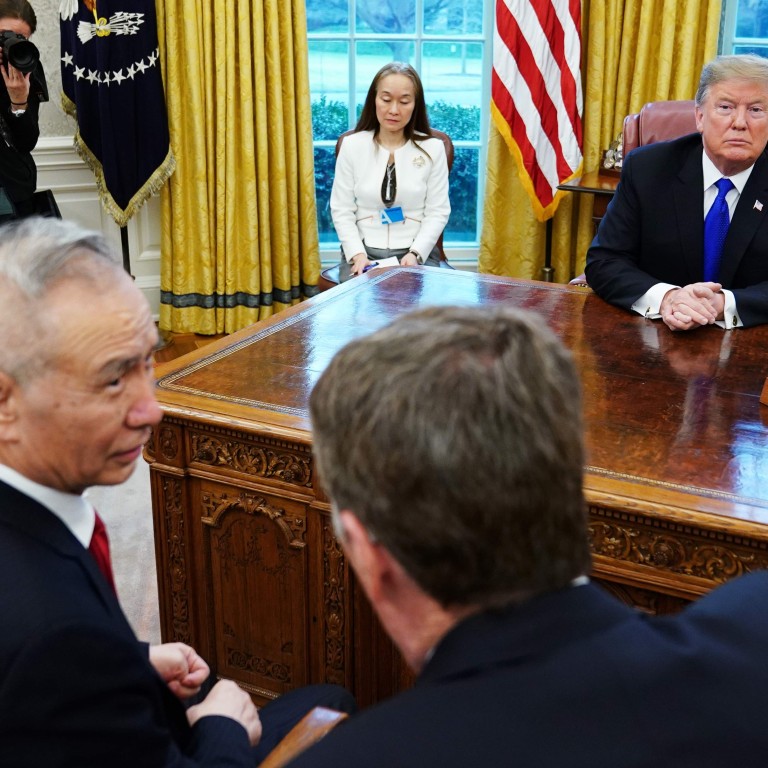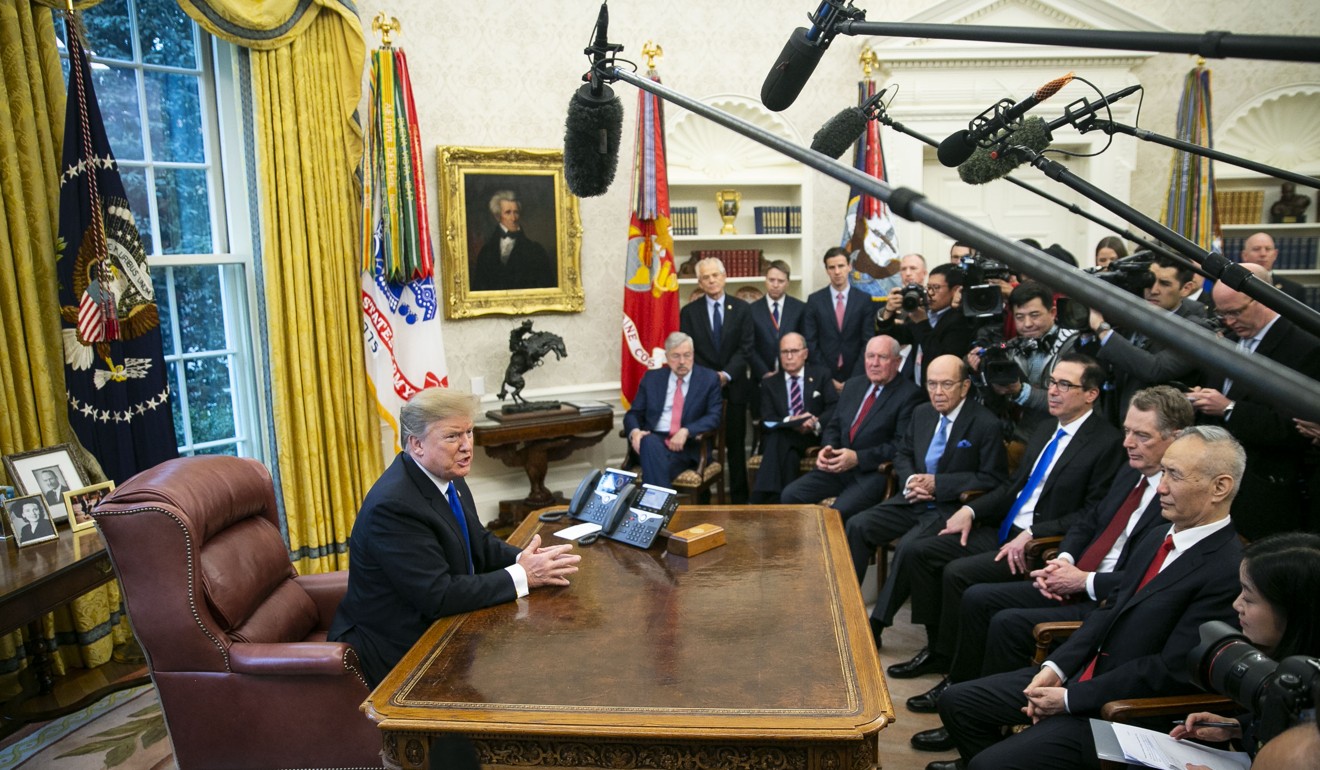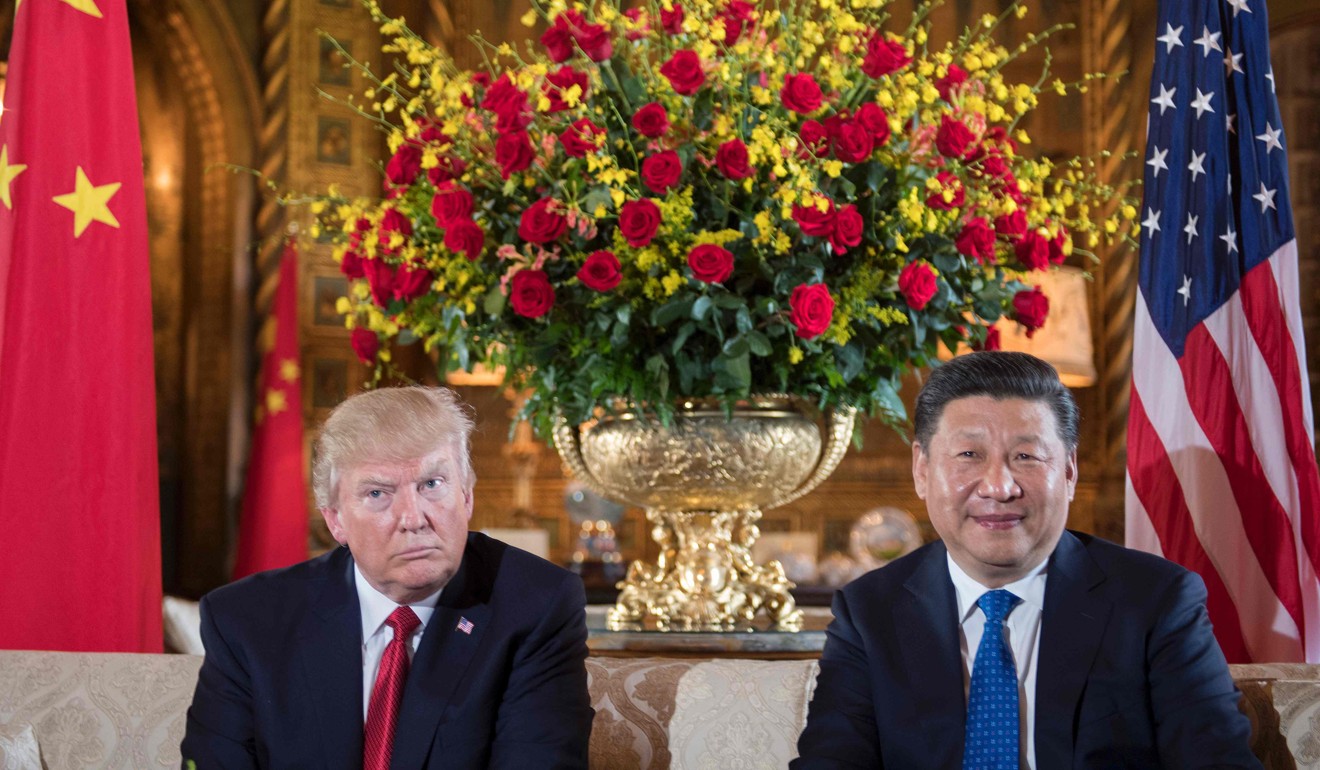
China, US will ‘redouble efforts and speed up’ trade talks, Chinese Vice-Premier Liu He says
- Negotiations in Washington extended for another 48 hours as the two sides try to reach a deal to end tariff war
- Liu says they have made ‘positive progress’ in areas including the trade imbalance, agriculture, forced technology transfers and financial services
Chinese Vice-Premier Liu He said China and the United States would “redouble efforts and speed up negotiations” on trade, as talks aiming to end a tariff war between the world’s two largest economies were extended for another 48 hours.
Appointed President Xi Jinping’s special envoy, Liu is leading China’s latest trade negotiations in Washington. He said the two teams had made “positive progress” over the past two days in areas including the trade imbalance, agriculture, forced technology transfers, intellectual property protection and financial services, and that a deal was “very likely”.
“In the next step, the two sides will redouble efforts and speed up negotiations to accomplish the great missions assigned by the two leaders,” Liu said, according to state news agency Xinhua on Saturday.
US and Chinese officials say a trade war deal is ‘extremely’ likely
Liu made the remarks during a meeting with US President Donald Trump and his top advisers in the Oval Office on Friday, when Trump suggested that he would meet Xi to push for a final deal next month at Mar-a-Lago, his resort in Palm Beach, Florida where the two leaders had their first face-to-face meeting about two years ago.

“Ultimately, I think the biggest decisions and some even smaller decisions will be made by President Xi and myself,” Trump told reporters in the Oval Office. “We expect to have a meeting some point in the not-too-distant future … And I think President Xi and I will work out the final points. Perhaps and perhaps not.”
Both sides said the talks – originally due to finish on Friday – had been extended for two days.
US-China trade war is more about geopolitical rivalry, such as in the South China Sea, than soybeans
Lu Xiang, a China-US specialist with the Chinese Academy of Social Sciences, said the negotiators may need more time to nail down details of the deals in the next 48 hours, but that the US could also make a last-minute push for further concessions from Beijing on structural issues such as cutting industrial subsidies.
“The US should be clear where China’s bottom line is after so many rounds of negotiations,” Lu said. “The fact is that without China’s state companies, it would be unlikely that the two sides could achieve balanced trade because most Chinese purchases of US goods are made by state-owned enterprises at the government’s order.”
The latest round of negotiations, which began on Thursday, came as the two sides were working around the clock to frame a deal to extend a trade war truce past March 1 – the deadline for a new escalation in US tariffs on US$200 billion of Chinese goods.
As part of its commitments, China is expected to sharply raise its purchases of US agricultural products – including an additional 10 million metric tonnes of soybeans, US Agriculture Secretary Sonny Perdue said on Twitter after the Oval Office meeting.
Chinese splurge on cherries, a less expensive luxury item
Beijing would also agree to open its electronic payment market to Visa and MasterCard, a source familiar with the talks told the South China Morning Post on Friday.
This could be seen as an encouraging sign for foreign card companies as China’s decade-long policy of blocking foreign players from its market is one of the frustrations, together with other issues – from massive state subsidies to forced technology transfers – that drove Trump to start a trade war with China. Access to China’s electronic payments market for Visa and MasterCard was also one of 10 points agreed between the two sides following the first Trump-Xi summit in April 2017 at Mar-a-Lago.

US Treasury Secretary Steven Mnuchin, who is also leading the negotiations, said on Friday that the US side had documented several memorandums of understanding that were “binding” and “enforceable” and would cover “all sorts of industries”. An agreement on currency manipulation had already been reached, he said.
But in a meeting with the Chinese delegation and reporters at the White House, Trump and US Trade Representative Robert Lighthizer clashed over the use of MOUs, which Lighthizer described as “just a legal term” and a contract, after Trump said he did not like them.
“I disagree,” Trump countered, prompting a laugh from Liu and a stern look from Lighthizer. “I think that a memorandum of understanding is not a contract to the extent that we want … We’re doing a memorandum of understanding that will be put into a final contract, I assume. But to me the final contract is really the thing, Bob, and I think you mean that too.”
The decision for the Chinese negotiators to extend their stay in Washington has been seen by Chinese media as a positive sign. State broadcaster China National Radio said in an editorial that both sides had made progress and were “working overtime” to reach a deal. “Extending the talks will allow the trade teams from both nations to have deeper communications and more careful planning, which will be beneficial to reaching and implementing a deal,” it said.



